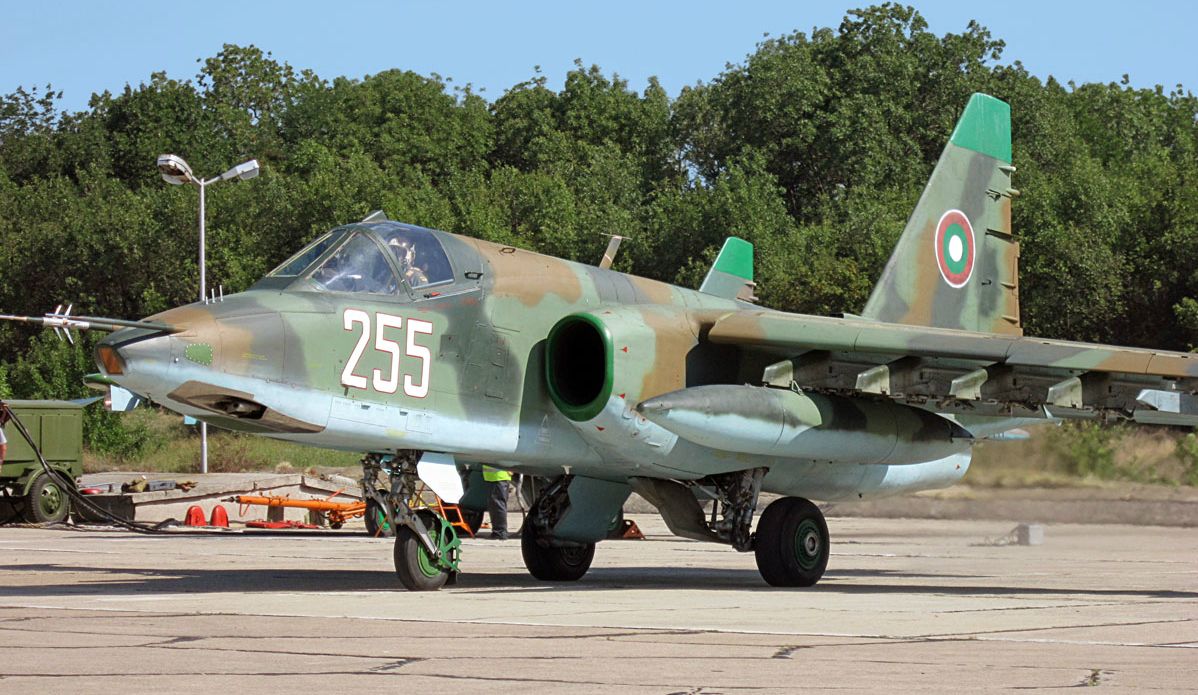The Sukhoi Su-25, affectionately known as the “Frogfoot,” stands as a testament to ruggedness, firepower, and durability in modern military aviation. Designed by the Soviet Union in the 1970s, this close air support aircraft has proven its mettle in numerous conflicts, earning a reputation as a reliable and formidable asset on the battlefield. With its heavy armament, exceptional survivability, and versatility, the Su-25 continues to serve in various air forces worldwide, showcasing its enduring legacy.

Origins and Development
The development of the Su-25 began in the early 1970s, during a period when the Soviet Union sought to enhance its ground-attack capabilities. Recognizing the need for a dedicated close air support aircraft, the Sukhoi design bureau embarked on creating a robust platform capable of operating in harsh conditions and delivering devastating firepower. The prototype, designated T-8, first took to the skies in February 1975. After rigorous testing and refinement, the Su-25 entered service with the Soviet Air Forces in 1981.

Design and Armament
The Su-25’s design prioritizes survivability and effectiveness in combat. Its airframe is built to withstand significant damage, featuring a titanium-armored cockpit that protects the pilot from ground fire. The aircraft’s twin-engine configuration provides redundancy, enhancing its ability to return to base even after sustaining critical hits.
A hallmark of the Su-25 is its heavy armament. The aircraft is equipped with a 30 mm Gryazev-Shipunov GSh-30-2 cannon, capable of unleashing a torrent of firepower against ground targets. Additionally, the Su-25 boasts an impressive payload capacity, able to carry over 4,000 kg (8,818 lb) of weapons, including rockets, bombs, and missiles. This versatility allows the Su-25 to engage a wide range of targets, from enemy armor and fortifications to troop concentrations and soft-skinned vehicles.

Combat Performance and Operational History
The Su-25 has seen extensive combat use, demonstrating its capabilities in various conflicts around the globe. Its baptism of fire came during the Soviet-Afghan War (1979-1989), where it provided crucial close air support to Soviet and Afghan government forces. The Su-25’s ability to operate from rough airstrips and deliver precise strikes made it a valuable asset in the rugged terrain of Afghanistan.
The Frogfoot continued to prove its worth in subsequent conflicts, including the Iran-Iraq War, the Gulf War, and the wars in Chechnya. In these theaters, the Su-25 showcased its resilience and effectiveness, often returning to base riddled with bullet holes but still operational. Its robust construction and redundant systems have earned it a reputation for being exceptionally difficult to shoot down.

Modern Upgrades and Continued Relevance
Despite being over four decades old, the Su-25 remains relevant in modern warfare thanks to continuous upgrades and modifications. Various nations have implemented enhancements to improve the aircraft’s avionics, targeting systems, and survivability. The Su-25SM variant, for example, features advanced navigation and targeting equipment, allowing for more precise strikes and improved mission effectiveness.
Furthermore, the Su-25 has found a niche in asymmetric warfare, where its ability to provide close air support in low-intensity conflicts is highly valued. The aircraft’s ruggedness and adaptability make it well-suited for operations in austere environments, where more advanced and delicate aircraft might struggle.

Conclusion
The Sukhoi Su-25 stands as a symbol of Soviet-era engineering excellence and a testament to the enduring value of well-designed military hardware. Its heavy armament, exceptional survivability, and adaptability have ensured its continued service and relevance in modern conflict zones. As long as there is a need for close air support in challenging environments, the Su-25 will remain a stalwart defender in the skies, delivering its lethal payload with unwavering precision. The legacy of the Frogfoot is one of resilience, firepower, and unyielding determination, securing its place in the annals of military aviation history.





